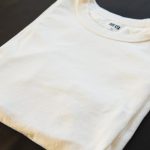Are you tired of the same old store-bought fabrics? Why not try your hand at hand dyeing fabric? Not only is it a fun and creative way to add some personal flair to your textiles, it can also be a sustainable option for upcycling old clothing or fabric scraps.
To get started, all you need are some basic materials such as fabric, dye, salt, and water. But the real magic happens with the techniques and methods you use to apply the dye. Whether it’s tie-dye, shibori, or dip-dyeing, there are endless possibilities for creating unique and beautiful designs.
And with a little practice and experimentation, you can achieve stunning results that will make your handmade creations truly one-of-a-kind.
So why not give hand dyeing fabric a try and see where your creativity takes you?
Table of Contents
Materials Needed for Hand Dyeing Fabric
To get started with hand dyeing fabric, you’ll need some basic materials that can easily be found at your local craft store.
The first thing you’ll need is fabric. Make sure to choose a fabric that is made of natural fibers, such as cotton, silk, or wool. These fabrics will absorb the dye much better than synthetic fabrics.
You’ll also need to prewash your fabric to remove any sizing or chemicals that may interfere with the dye process.
The next thing you’ll need is dye. There are many different types of dye available, including natural dyes and synthetic dyes. Natural dyes are made from plants and other natural sources, while synthetic dyes are created in a lab. Choose a dye that is suitable for the type of fabric you’ll be using.
You’ll also need to decide on the color or colors you want to use.
In addition to fabric and dye, you’ll also need some basic supplies. These include rubber gloves to protect your hands from the dye, a large plastic container or bucket to mix the dye in, and a stirring utensil.
You may also want to have some additional tools on hand, such as a measuring cup, a scale, and a thermometer.
With these basic materials, you’ll be ready to start experimenting with different hand dyeing techniques and creating your own unique fabrics.
Preparation for Hand Dyeing Fabric
Before you start dyeing, it’s important to properly prepare your fabric by washing it with mild detergent and removing any sizing or finishes. This ensures that the dye will be evenly absorbed by the fabric and won’t be hindered by any remaining chemicals or dirt. The washing process should be done in warm water and the fabric should be agitated gently to avoid any damage.
After washing, the fabric should be dried completely before dyeing. Any moisture can affect the way the dye absorbs into the fabric. You can air dry the fabric or use a dryer, but make sure it’s completely dry before continuing with the dyeing process.
Once your fabric is dry, you can begin the actual dyeing process. Before dyeing, it’s also important to consider the type of dye you’ll be using and the color you want to achieve. Some dyes require a specific type of fabric or need to be mixed with certain chemicals to work properly. It’s always a good idea to read the instructions that come with your dye and do a test swatch to see how the color turns out on your particular fabric.
With proper preparation and attention to detail, you’ll be able to achieve beautifully dyed fabrics that are perfect for any project.
Techniques for Hand Dyeing Fabric
Now it’s time to learn some techniques for hand dyeing fabric! You’ll get to explore the exciting world of tie-dyeing, dip-dyeing, shibori, and resist dyeing.
These techniques allow you to create unique patterns and designs on your fabric, making each piece one-of-a-kind.
Get ready to experiment and have some fun with these hand dyeing techniques!
Tie-Dyeing
You can create unique patterns on fabric by tie-dyeing it with various colors. Tie-dyeing is a technique that involves tying sections of fabric with string or rubber bands to create patterns, and then dipping the fabric into a dye bath.
The tied areas resist the dye, creating a pattern of dyed and undyed areas. This technique is perfect for creating vibrant and fun designs on t-shirts, dresses, and even home decor items.
Tie-dyeing can be done in many ways, such as using a single color or multiple colors. You can create a spiral pattern by twisting the fabric and tying it in a tight spiral shape. For a striped pattern, you can fold the fabric accordion-style and tie it with rubber bands along the folds.
With tie-dyeing, the possibilities are endless, and you can experiment with different techniques to create your own unique designs. So, grab some fabric, dye, and rubber bands, and start creating your own tie-dyed masterpiece!
Dip-Dyeing
To achieve a gradient effect on your clothing, dip your garment in a dye bath that gradually gets lighter or darker. Dip-dyeing is a simple and popular fabric dyeing technique that creates a beautiful ombre effect.
This technique involves dipping the fabric into the dye bath partially, allowing the dye to gradually penetrate the fabric from the bottom up. Dip-dyeing can be done using a single color or multiple colors to create a more vibrant effect.
To achieve a smooth gradient, it’s important to keep the fabric moving in the dye bath and to slowly lift it out of the dye as the color becomes lighter. Dip-dyeing can be used on a variety of fabrics, including cotton, silk, and wool.
It’s a fun and easy way to add some color and personality to your clothing!
Shibori
Get ready to explore the fascinating world of Shibori, a Japanese tie-dyeing technique that creates unique and intricate patterns on fabric. Shibori involves folding, twisting, and binding fabric before dyeing it, resulting in beautiful and organic designs. The technique requires patience and precision, but the end result is worth every effort.
To fully understand the various Shibori techniques, it’s helpful to familiarize yourself with the different methods of folding and binding fabric. The following table showcases three popular Shibori techniques along with their corresponding description and resulting pattern. By experimenting with these techniques, you can create your own unique Shibori designs and add a touch of personal style to your fabric projects. Get ready to immerse yourself in the art of Shibori and let your creativity flow.
| Technique | Description | Resulting Pattern | ||||
|---|---|---|---|---|---|---|
| Kumo | Fabric is gathered and bound with thread or rubber bands to create a spiderweb-like pattern | Intricate and organic circular or starburst designs | ||||
| Itajime | Fabric is folded and clamped between two blocks, creating a geometric pattern | Bold and structured geometric shapes | ||||
| Arashi | Fabric is wrapped around a pole and bound diagonally, resulting in a linear, flowing pattern resembling rain | Fluid and organic lines resembling rain or water droplets | Shibori | Fabric is manipulated and bound in various ways to create unique patterns and textures | Intricate and tactile designs |
Resist Dyeing
Exploring resist dyeing allows for a unique way to incorporate intricate designs and textures into your creative projects.
Resist dyeing involves applying a substance to the fabric in order to prevent dye from adhering to certain areas. This creates a pattern or design on the fabric that is created by the areas where the dye was blocked.
There are several different methods of resist dyeing, including batik, tie-dye, and wax resist. Batik involves applying hot wax to the fabric in specific areas before dyeing, while tie-dye involves tying off certain areas of the fabric before dyeing.
Wax resist involves applying wax to the fabric and then dyeing it. Each method creates a unique pattern and texture on the fabric, allowing for endless creative possibilities.
Tips for Successful Hand Dyeing
When it comes to hand dyeing fabric, you want to make sure you get it right the first time. That’s why it’s important to understand how to mix colors, achieve consistent results, and troubleshoot common problems.
With these tips in mind, you’ll be able to create beautiful and unique pieces that showcase your creativity and skill.
Mixing Colors
To achieve the perfect hue, it’s important to experiment with different color combinations when mixing dyes for your fabric. Mixing colors can be intimidating, but with a little practice and the right tools, you can create a wide range of shades and tones.
Start by choosing your primary colors: red, blue, and yellow. From there, you can mix them together to create secondary colors such as purple, green, and orange. Use the table below as a guide to help you mix the perfect shade for your project. Keep in mind that the amount of dye you use will affect the intensity of the color, so start with a small amount and add more as needed.
| Primary Color | Secondary Color 1 | Secondary Color 2 | Tertiary Color |
|---|---|---|---|
| Red | Purple | Orange | Red-orange |
| Blue | Green | Purple | Blue-purple |
| Yellow | Orange | Green | Yellow-green |
Experimenting with different color combinations can be a fun and rewarding part of the hand dyeing process. Don’t be afraid to mix and match until you find the perfect shade for your project. With a little practice, you’ll be able to create custom colors that are truly one-of-a-kind.
Achieving Consistent Results
If you want your colors to come out consistently, you’ll need to use the same amount of dye and water for each batch. This means measuring out the dye and water precisely and keeping track of the ratios you use. You can use measuring cups or beakers to ensure accuracy.
Additionally, make sure to mix the dye and water thoroughly before adding the fabric to the dye bath.
Another way to achieve consistent results is to pre-wash your fabric before dyeing. This removes any sizing or finishes that could affect the way the fabric takes the dye. Make sure to use a pH-neutral detergent and rinse the fabric thoroughly to remove any residue.
Once the fabric is dry, you can begin the dyeing process. By using the same amount of dye and water for each batch and pre-washing your fabric, you can ensure that your colors will come out consistently every time.
Troubleshooting Common Problems
Dealing with common dyeing mishaps can be frustrating, but don’t worry, there are some easy fixes that can save your project. Here are some troubleshooting tips to help you overcome the most common problems:
-
Uneven dye distribution: This problem can be caused by inadequate stirring or insufficient water. To fix it, simply re-dye the fabric, making sure to stir the dye bath well and use enough water to cover the fabric completely.
-
Fading can occur when the dye is exposed to sunlight or other harsh elements. To prevent this, try adding a fixative to your dye bath or using a dye that is specially formulated to resist fading.
-
Color bleeding: If the dye is bleeding onto other fabrics or surfaces, it may be due to inadequate rinsing or insufficient setting time. To fix this, rinse the fabric thoroughly in cold water until the water runs clear, then set the dye according to the manufacturer’s instructions.
-
Streaking can occur when the fabric is not evenly saturated with dye or when the dye is not stirred well enough. To avoid this, make sure to stir the dye bath well and use enough water to completely cover the fabric.
Aftercare for Hand Dyed Fabrics
You’ll want to take special care of your hand dyed fabrics to ensure they maintain their vibrant colors and quality. After all the hard work you’ve put into creating your beautiful hand dyed fabrics, you’ll want to make sure they last as long as possible.
The first step in aftercare is to wash your fabric in cold water with a mild detergent. This will help to remove any excess dye and prevent bleeding.
Once your fabric has been washed, it’s important to handle it with care. Avoid wringing or twisting the fabric, as this can cause damage to the fibers and affect the colors. Instead, gently squeeze out any excess water and lay the fabric flat to dry. If you must use a dryer, use the lowest heat setting possible and remove the fabric while it’s still slightly damp.
It’s important to store your hand dyed fabrics properly. Make sure they are completely dry before folding and storing them away. Avoid exposing them to direct sunlight or harsh chemicals, as this can cause fading and damage.
With proper care and attention, your hand dyed fabrics will remain vibrant and beautiful for years to come.
Inspiration for Hand Dyed Fabric Projects
Now that you’ve mastered the art of hand dyeing fabric, it’s time to get inspired and put your newly dyed fabrics to good use!
There are so many possibilities for incorporating your hand dyed fabrics into a variety of projects. From clothing and accessories to home decor, and even gifts and crafts, the sky’s the limit.
So, grab your dyed fabrics and let’s explore some creative ideas together!
Clothing and Accessories
When it comes to making unique fashion statements, nothing beats hand dyeing your own clothing and accessories. Not only are you able to create one-of-a-kind pieces, but you also get to experiment with different dyeing techniques and color combinations.
Here are some ideas to get you started:
-
Tie-dye t-shirts: This classic technique never goes out of style and can be done in a variety of ways, from the classic spiral to more intricate designs.
-
Dip-dyed skirts: Give a plain white skirt a bold pop of color by dip-dyeing the hemline. You can also experiment with ombre effects by gradually lightening or darkening the dye as you dip.
-
Shibori scarves: Shibori is a Japanese technique that involves binding, stitching, or twisting fabric before dyeing it, resulting in beautiful and unique patterns. Try making a shibori scarf for a statement accessory.
-
Indigo denim jackets: A denim jacket is a versatile staple in any wardrobe, but a hand-dyed indigo version takes it to the next level. Use traditional indigo dye and experiment with different folding and tying techniques for a truly customized look.
Get creative and have fun with your hand-dyed clothing and accessories. The possibilities are endless!
Home Decor
Transforming your living space into a personalized oasis can be as simple as adding some unique and colorful home decor accents. And hand dyeing fabric techniques can help you achieve just that.
From pillow covers to curtains, tablecloths to wall hangings, you can bring a touch of individuality and creativity to every corner of your home. There are many techniques you can try, such as tie-dye, shibori, and dip-dyeing. Each one offers a different effect and level of difficulty, but all can be done with basic supplies and a little patience.
Whether you want to create a bold statement piece or a subtle, complementary accent, hand dyeing fabric allows you to customize your home decor in a way that store-bought items simply can’t match. So why not give it a try and see how you can transform your living space into a truly unique and personalized oasis?
Gifts and Crafts
You can easily add a personal touch to your gift-giving with unique and creative crafts. Hand dyeing fabric techniques offer a great way to create one-of-a-kind gifts that are sure to impress. Whether you’re making a gift for a friend or family member, or selling your crafts at a market, hand dyeing fabric can be a fun and rewarding experience.
To take your hand dyed crafts to the next level, consider incorporating some of these techniques:
-
Shibori: A Japanese technique that involves folding, tying, and compressing fabric to create unique patterns.
-
Arashi: A type of Shibori that involves wrapping fabric around a pole and then scrunching it to create a striped pattern.
-
Kumo: A type of Shibori that involves twisting and binding fabric to create a spiderweb-like pattern.
-
Ombre: A technique that involves gradually blending one color into another.
-
Dip Dyeing: A type of ombre that involves dipping fabric into a dye bath at different depths to achieve a gradient effect.
-
Spray Dyeing: A type of ombre that involves spraying fabric with dye at different angles to create a gradient effect.
By incorporating these techniques into your hand dyed fabric crafts, you can create unique and beautiful gifts that are sure to be cherished for years to come.
- Why Is Red Velvet Not Red? - April 25, 2024
- How Do You Describe Velvet Fabric? - April 25, 2024
- How Strong Is Velvet? - April 25, 2024





